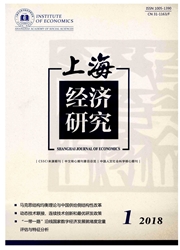

 中文摘要:
中文摘要:
大中小城市协调有助于城市体系优化发展。长三角这类由市场导向型城市构成的城市体系,城市规模分布理论上遵循序位一规模法则(Rank—sizelaw)。为此,本文基于zipf定律分析长三角大中小城市均衡发展特征及其成因。首先,运用Zipf定律检验长三角城市的序位一规模分布特征,通过创新性地计算序位一规模的偏差,发现长三角城市群的序位一规模偏差度不断增大——大城市规模相对偏大和小城市规模相对偏小的“分岔”现象。接着,运用城市经济学的出口基础理论分析其成因,即分别以制造业和服务业的区位商来估算出口部门的乘数效应。回归结果表明,大城市规模相对偏大是因为既受制造业出口乘数效应,又受到服务业乘数效应的积极影响,而县级小城市,驱动城市增长的动力仅来自制造业出口乘数效应,服务业以本地消费为主由此乘数效应少,导致城市规模相对偏小。本文政策含义是:长三角中小城市工业化并没有显著地推动城市化,服务化水平不足制约了城市化的发展,需要加快服务业发展来推进长三角城市群协调发展。
 英文摘要:
英文摘要:
Accorcung to u,~ composed of market-oriented cities. However, it is not applicable to the system of cities in the Chinese Yangtze River Delta, i.e. most small cities (or cities at the county level) are downward deviated through the regression line that is used to test the law of rank-size. This paper aims to investigate the causes based on the export-base theory, and estimate the multiplier effort of export sector with location quotients of manufacture and service industry. Through the regression results, we find that the gap between the real and the optimal sizes of small cities in line with the rank-size law mainly depends on the export multiplier effect of the service industry, while that of the manufacture industry influences little. The important policy implication of this paper is that the industrialization of Chinese Yangtze Ri-~er Delta didn't obviously promote urbanization which is restricted by the lack of service level. Therefore, to optimize the development of the system of cities in the delta, the governments should increase service development in the small cities.
 同期刊论文项目
同期刊论文项目
 同项目期刊论文
同项目期刊论文
 期刊信息
期刊信息
